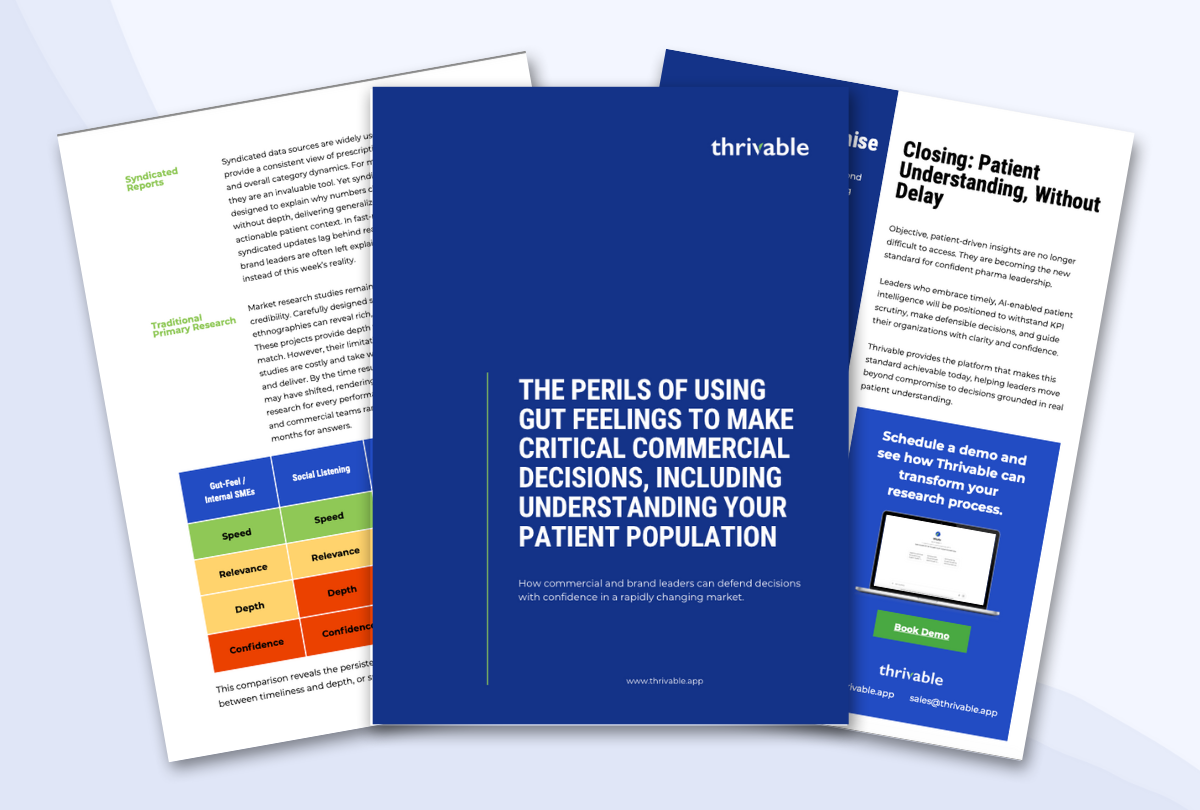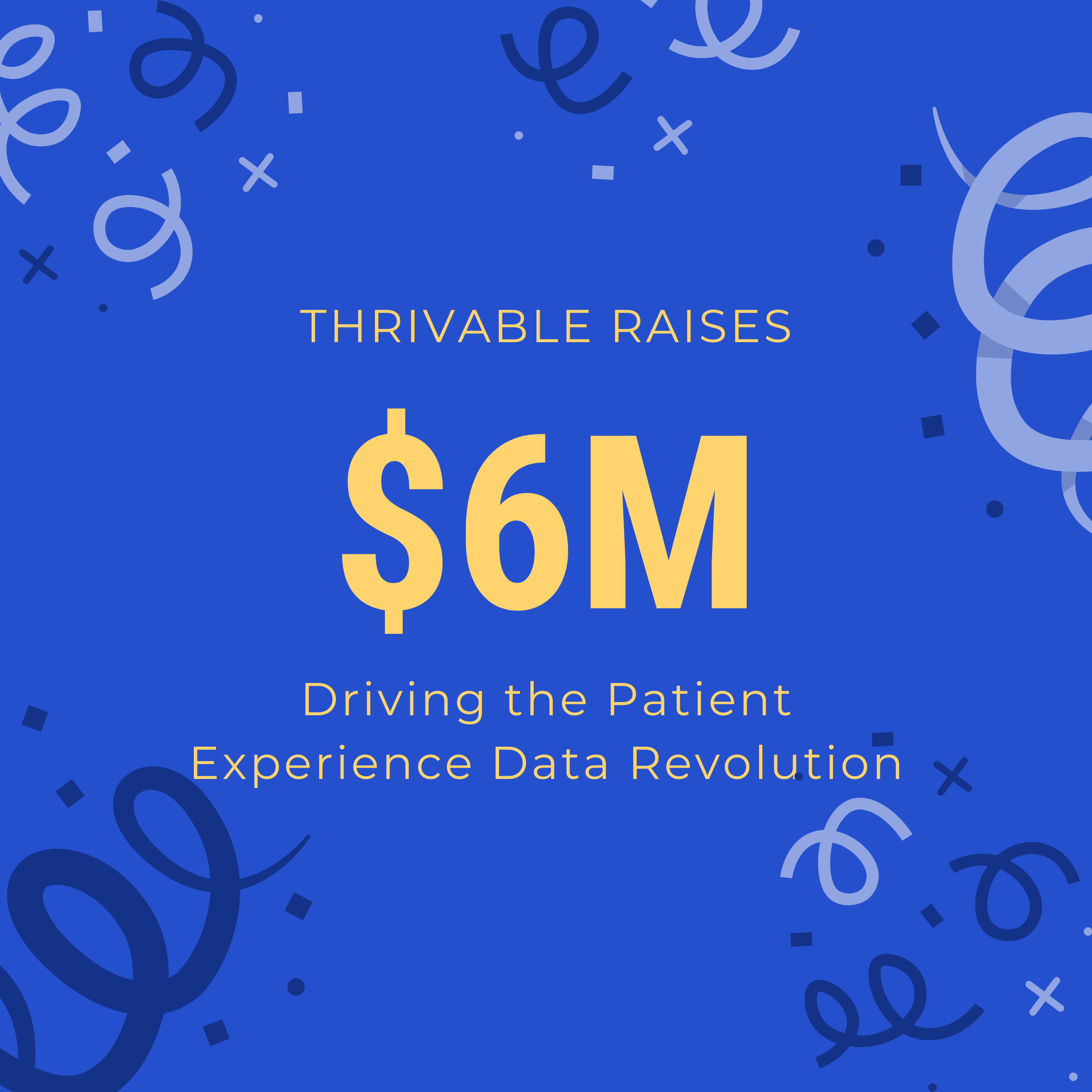Blog
From Gut Feel to Clarity: 3 Steps to Smarter Brand Decisions

Adam Zandman
Marketing Director
Industry Trends

Every commercial and brand leader has experienced it: the monthly performance review where forecasts are scrutinized, KPIs are dissected, and executives expect clear explanations for every variance. When performance misses the mark, the pressure to provide immediate answers is immense. Yet too often, those answers are rooted not in evidence, but in gut instinct, partial data, or outdated reports.
At first glance, gut instinct might seem harmless — even necessary. After all, experienced leaders pride themselves on intuition built over years in the industry. But when billion-dollar product launches, brand strategies, or market expansions hang in the balance, gut feel alone is not enough. It exposes leaders to unnecessary risk, undermines credibility, and delays effective action.
The reality is that traditional tools can only tell you what happened. They rarely explain why. Sales dipped, market share declined, adoption slowed — but without context from the patient experience, these numbers remain incomplete. And incomplete insights lead to incomplete strategies.
To move from reactive to proactive, leaders must evolve beyond instinct and embrace a patient-centered, evidence-based approach. Here are three steps to guide that transition.
1. Close the Loop with Patient Feedback
Numbers highlight problems, but they rarely reveal causes. A sudden decline in adoption might suggest competitive pressure, pricing concerns, or shifting patient preferences, but only the patients themselves can confirm it.
Closing the loop with patient feedback means incorporating the voice of the patient into every decision cycle. This isn’t a one-off survey or a focus group conducted months after the fact. It’s an ongoing dialogue, integrated into how organizations measure, evaluate, and adapt.
-
Surveys and panels provide broad signals about perceptions, satisfaction, and unmet needs.
-
Qualitative interviews reveal the “why” behind patient behaviors — the barriers, frustrations, and motivations that drive choices.
-
Real-time digital feedback captures shifts as they happen, not months later when course correction is more costly.
When leaders understand not just what happened but why it happened, their strategies shift from surface-level adjustments to meaningful interventions. They no longer explain performance with speculation, they explain it with clarity.
2. Validate Assumptions with Fresh Data
Leadership instinct often draws on past successes. But the healthcare landscape is dynamic: new competitors emerge, treatment paradigms evolve, and patient expectations shift quickly. Assumptions that once held true can become liabilities if left unchallenged.
Validating assumptions with fresh data is about replacing outdated market intelligence with current, patient-centered insight. This means asking:
-
Are our messaging and positioning still resonating with patients today?
-
Have patient priorities shifted in light of new therapies or technologies?
-
Do our assumptions about access, adherence, or lifestyle align with lived experiences?
Relying on stale information can misguide billion-dollar decisions, while fresh patient data grounds strategies in present-day reality. Organizations that build this discipline into their planning cycles are better equipped to pivot quickly, avoiding wasted spend and missed opportunities.
3. Spot Risks Earlier with Real-Time Signals
The costliest errors in brand and commercial strategy are rarely sudden; they are gradual shifts that go undetected until it’s too late. A slow erosion of patient trust, a creeping decline in satisfaction, or an emerging competitor that patients begin to notice; these risks start small. Without the right signals, they remain invisible until the damage is done.
By embedding real-time patient insights into monitoring systems, leaders can detect early warning signs and act decisively. This proactive posture transforms the role of data from postmortem analysis to strategic foresight.
For example:
-
Early detection of dissatisfaction allows teams to adjust messaging or support programs before it impacts adherence.
-
Tracking subtle changes in patient behavior can uncover competitive threats before they claim significant market share.
-
Real-time feedback loops enable continuous refinement rather than delayed, large-scale course corrections.
Organizations that can act on these signals faster than their competitors establish a durable advantage: credibility, responsiveness, and resilience.
The Bigger Picture: Gut Feel Has Its Place, But Not at the Center
Gut feel will always have a role in leadership. Intuition, judgment, and experience are invaluable, especially in ambiguous or rapidly evolving situations. But instinct should be supported, not substituted, by evidence.
Patient-centered insights provide the foundation that allows gut feel to be applied wisely. They offer the clarity needed to separate noise from signal, to prioritize the right actions, and to explain performance with confidence.
In today’s environment, where commercial decisions carry immense financial stakes and brand reputation risks, leaders cannot afford to rely on guesswork alone. The organizations that succeed will be those that combine instinct with insight, and that insight must come directly from patients.
Moving Forward
Commercial and brand leaders are under more pressure than ever to explain, justify, and adapt. Gut feel cannot withstand that level of scrutiny. What leaders need is clarity, powered by patient-centered insights that reveal not just what is happening, but why.
By following these three steps: closing the loop with patient feedback, validating assumptions with fresh data, and spotting risks earlier with real-time signals, leaders can move beyond instinct to confident, evidence-based strategy.
Want to explore the issue in depth? Download our white paper, The Perils of Using Gut Feelings to Make Critical Commercial Decisions
Ready to see how Thrivable can deliver patient insights for your team? Book a Demo
About the author

Adam Zandman
Marketing Director
Adam, Thrivable's Marketing Director, is a passionate advocate for improving the patient experience, driving companies to prioritize the patient voice in their decisions





